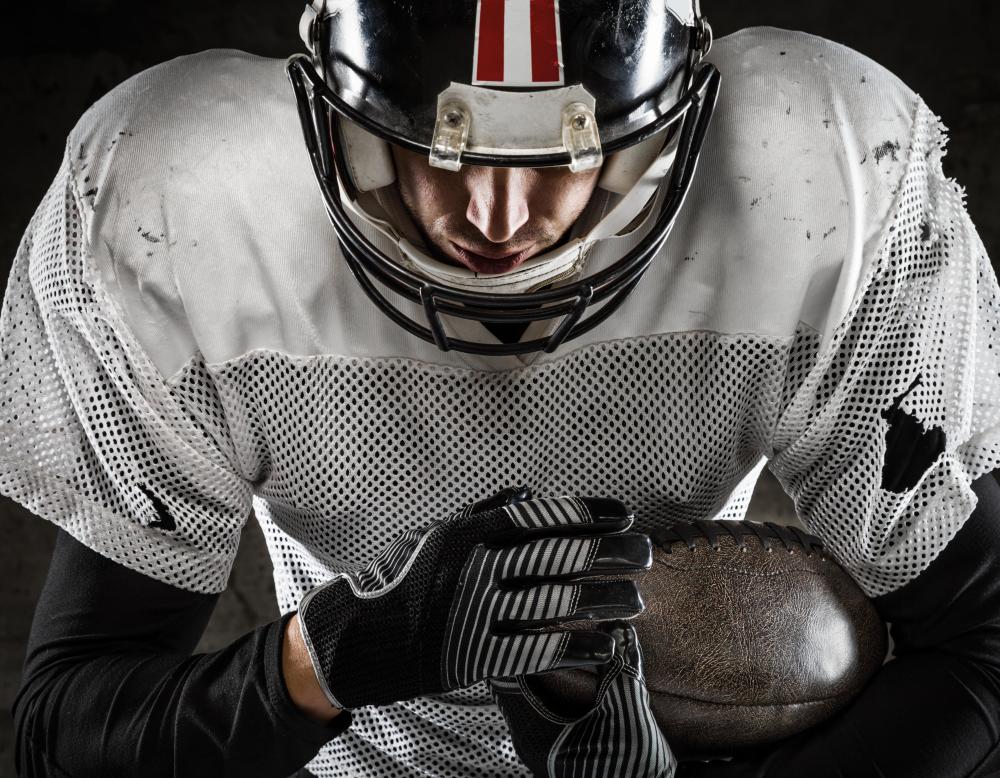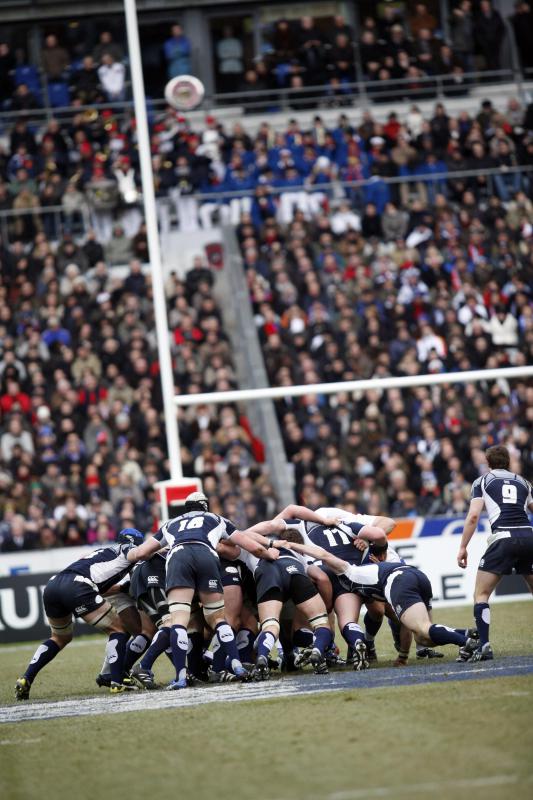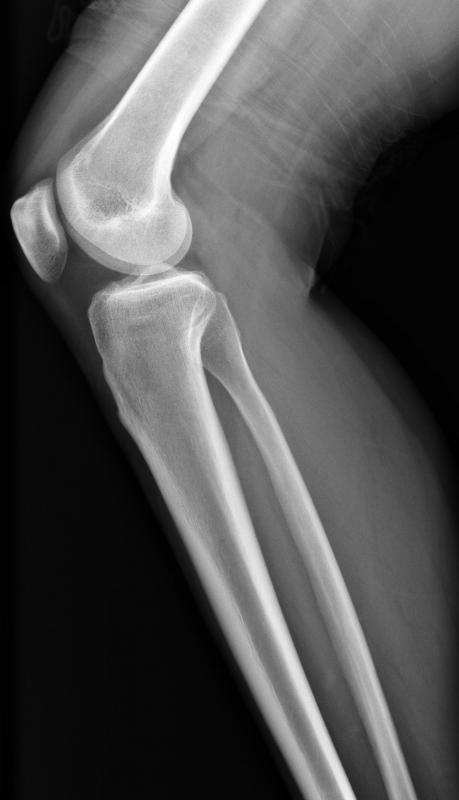At TheHealthBoard, we're committed to delivering accurate, trustworthy information. Our expert-authored content is rigorously fact-checked and sourced from credible authorities. Discover how we uphold the highest standards in providing you with reliable knowledge.
What Is a Spiral Fibula Fracture?
The fibula is one of the bones in the lower leg. Bones can break in different ways, and the term spiral fracture refers to a break where the bone structure cannot handle a twisting force and breaks open in a spiral fashion. Events associated with a spiral fibula fracture include skiiing accidents and mishaps in other sports that involve bodily contact with another player.
Below the knee are two long bones. These bones are the fibula and the tibia. Both run the length of the lower leg in parallel, but the thicker and stronger of the two, the tibia, holds the weight of the person. The fibula is present to act as an attachment point for ligaments and muscles at the ankle end of the leg. People who need bone grafts can even take bone from the fibula for the graft without affecting the structural stability of the leg as a whole.

Fibula fractures are not as common as tibia fractures. Often, though, when the fibula is fractured, the tibia is broken as well. Common forms of long bone breakages are caused by direct impact or falls. A spiral fibula fracture results from a different type of accident, where one particular type of force acts on the bone.
Force can act on an object several different ways. When the force is applied in a twisting manner, it is called torsion. A torsion force can be intense enough to break a strong structure like bone, especially as adult bone is not very flexible compared to children's bones.

One particular situation where torsion forces can cause a spiral fibula fracture is skiiing. A skier wears an inflexible boot that stops above the ankle. The ski attached to the boot is supposed to slide smoothly over the snow at speed. If the skier hits an obstacle and the ski becomes stuck and suddenly stops the skier in his or her tracks, the body can twist around the stationary boot. The fibula cracks and splinters under the pressure.

Contact sports like football or rugby can also result in a spiral fibula fracture. In these situations, the impact of another person causes a torsion force on the affected player, and the fibula breaks under the stress. Most often, when a fibula breaks in a spiral fashion, the tibia breaks as well. As the fibula has an important nerve lying over it, affected patients may also suffer from a lack of sensation in the foot as well as pain from the break. Treatment for a spiral fibula fracture typically involves immobilization until the bone heals.
AS FEATURED ON:
AS FEATURED ON:















Discussion Comments
@Fristepha: I had a spiral fibula fracture in August 2012. It's now April 2014. I was playing roller derby at the time. I was 'off wheels' for three months and one week, however I did not return to full contact play for another two months after that.
I would say it is absolutely imperative that your son takes plenty of time to heal fully, including getting plenty of physiotherapy, and committing to doing whatever exercises he is told to, every single day. The ligament damage caused by the forces which lead to a spiral fracture is actually 'worse' as in, ligaments take much much longer to heal than the bone does. So, while there is probably no reason why your son can't get back to football, if he jumps back in too soon he will likely end up with longer term problems - if he unconsciously favors the damaged ligaments, his joints will slowly start to compensate, so the knee gradually loses a little alignment and that can lead to more problems down the road.
So, tell him to take his recovery seriously, just as any athlete would. Best wishes for his healing and tell him to hang in there and follow the physio's advice!
Post your comments